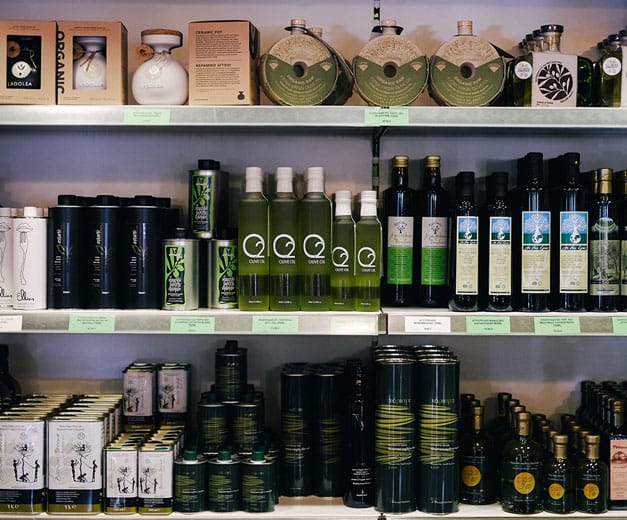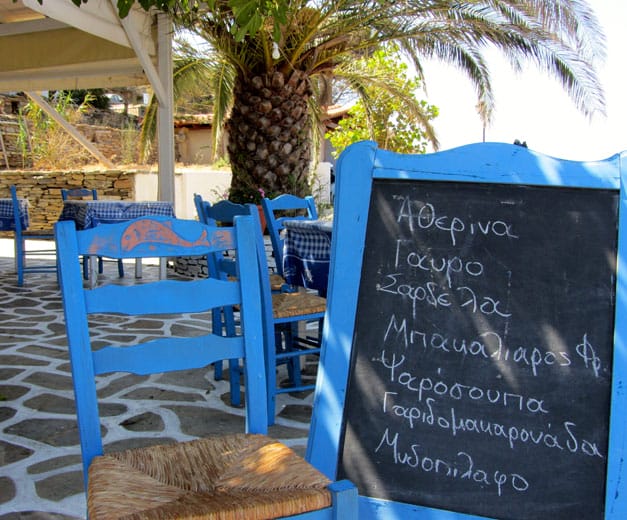In Greece, where the land is mostly rocky and steep and the climate hot and arid, the olive tree thrives, and for millennia, olive oil has been as essential to Greek cooking as the gnarled, silver-leaved trees have been to the country’s landscape. Greece is the third-largest producer of olive oil in the world after Spain and Italy and the greatest in consumption per capita.
Used liberally as a cooking fat for all manner of ingredients and preparations, as well as in its raw state to dress or flavor dishes, olive oil also plays an influential role in Greek baking, such as in koulourakia, twisted or coiled cookies, and paximadia, the twice-baked rusks that come savory or sweet.
Among the many, many native Greek olive varieties, a few are especially well known for the oil they produce. Koroneiki, the most famous, is grown in the Peloponnese and Crete, and makes up approximately 60 percent of the country’s total oil production. The oil made from this variety tends to be pungent, fruity, spicy and slightly bitter – ideal for all uses. Athinolia is grown in the same areas as Koroneiki, and in fact, they share a resemblance to each other, but with its more intense fruitiness and balanced peppery and bitter notes, Athinolia is suited more to drizzling on food just before serving. Grown mainly in the Peloponnese, the Manaki variety is mild and suited to more everyday cooking and frying, and Valanolia, cultivated on the islands of Lesbos and Chios, offers complex aromas and a strong fruity flavor and is also suitable for cooking.
 In Athens, our favorite place to shop for domestic olive oil is Pantopoleion tis Mesogeiakis Diatrofis, located just opposite the old Athens Stock Exchange. It specializes exclusively in carefully selected Greek products made mostly by small producers, many with protected designations of origin, including favas and tomato paste from Santorini and tuna from Alonissos. There are scores of pasta, cheeses and cured meats to choose from as well. In the oil section alone, 200 producers and more than a thousand labels stand on the shelves. Three to look for:
In Athens, our favorite place to shop for domestic olive oil is Pantopoleion tis Mesogeiakis Diatrofis, located just opposite the old Athens Stock Exchange. It specializes exclusively in carefully selected Greek products made mostly by small producers, many with protected designations of origin, including favas and tomato paste from Santorini and tuna from Alonissos. There are scores of pasta, cheeses and cured meats to choose from as well. In the oil section alone, 200 producers and more than a thousand labels stand on the shelves. Three to look for:
Protolado Statir
Protolado refers to the first pressing of oil. Statir’s unfiltered oil is produced by Dimitris Portolos in Chalkidiki, Northern Greece, from Chondroelies olives using cold extraction. Each year, usually in early November, Statir releases a limited number of bottles pressed from the latest harvest, and we always rush to bring some home to enjoy its profoundly fruity, kicky flavors drizzled on salads and to finish most of our dishes.
Astarti Exclusive
After studying agronomy and organic agriculture in Crete and the Netherlands, Harry Tzortzopoulos returned home to Kythira to cultivate olives. The extra-virgin Astarti Exclusive is pressed from organically farmed Koroneiki olives and offers remarkable complexity, with both delicate and peppery notes. www.tzortzopoulos-estate.gr
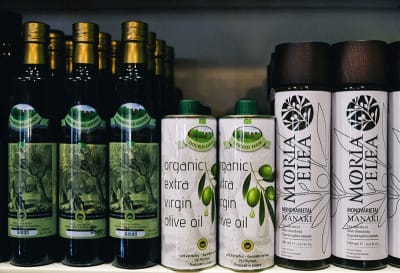 Moria Elea Monovarietal Manaki
Moria Elea Monovarietal Manaki
In Kranidi, Kostas Balafas and George Dimarakis produce fine olive oil from Manaki olives. Though they set up shop only in 2011, Balafas and Dimarakis have invested themselves in producing the highest quality oil. It doesn’t hurt that the branding and packaging are especially comely, either. www.moriaelea.com
Whichever oil you take home, be sure to store it in a dark and cool place, ideally in a tightly shut glass or tin vessel to keep the contents from oxidizing and going rancid. The fresher the better: it’s best to consume the olive oil within six to 12 months.
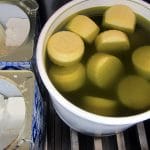 April 13, 2019 Building Blocks
April 13, 2019 Building Blocks
Feta must be one of the world’s oldest cheeses, it’s certainly one of the most famous, […] Posted in Athens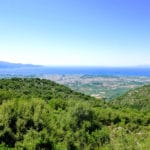 September 21, 2016 CB on the Road
September 21, 2016 CB on the Road
All around Messinia lie endless fields of olive trees, their silvery leaves shining […] Posted in Athens August 25, 2015 CB on the Road
August 25, 2015 CB on the Road
Some islands, Mykonos and Santorini for example, are known for their temples of […] Posted in Athens
Published on April 14, 2014
Related stories
Sample Greece's best feta with us our Downtown Athens walk!
April 13, 2019
AthensFeta must be one of the world’s oldest cheeses, it’s certainly one of the most famous, and it’s practically never missing from a Greek table, no matter the time of day. A person might grab a chunk of this chalk-white substance for breakfast, crunch through layers of feta-stuffed phyllo for elevenses, put a slab of…
September 21, 2016
AthensAll around Messinia lie endless fields of olive trees, their silvery leaves shining everywhere you look. This region in the southwestern part of the Peloponnese has been known for its fertile land since ancient times. Some of the best olive oil in the world comes from here. The capital, largest city and central port of…
August 25, 2015
AthensSome islands, Mykonos and Santorini for example, are known for their temples of gastronomy. Others, like Tinos, Milos, Syros and Sifnos, possess solid reputations for uniformly excellent tavernas. Until recently, Andros, a green anomaly in the treeless, windswept Cycladic chain, had two main attractions for tourists: a world-class modern art museum and a network of…







































